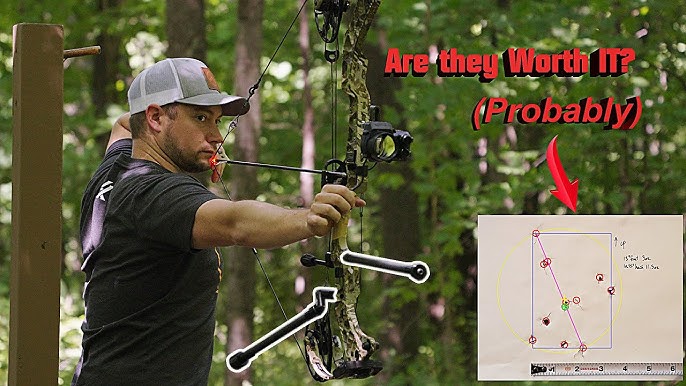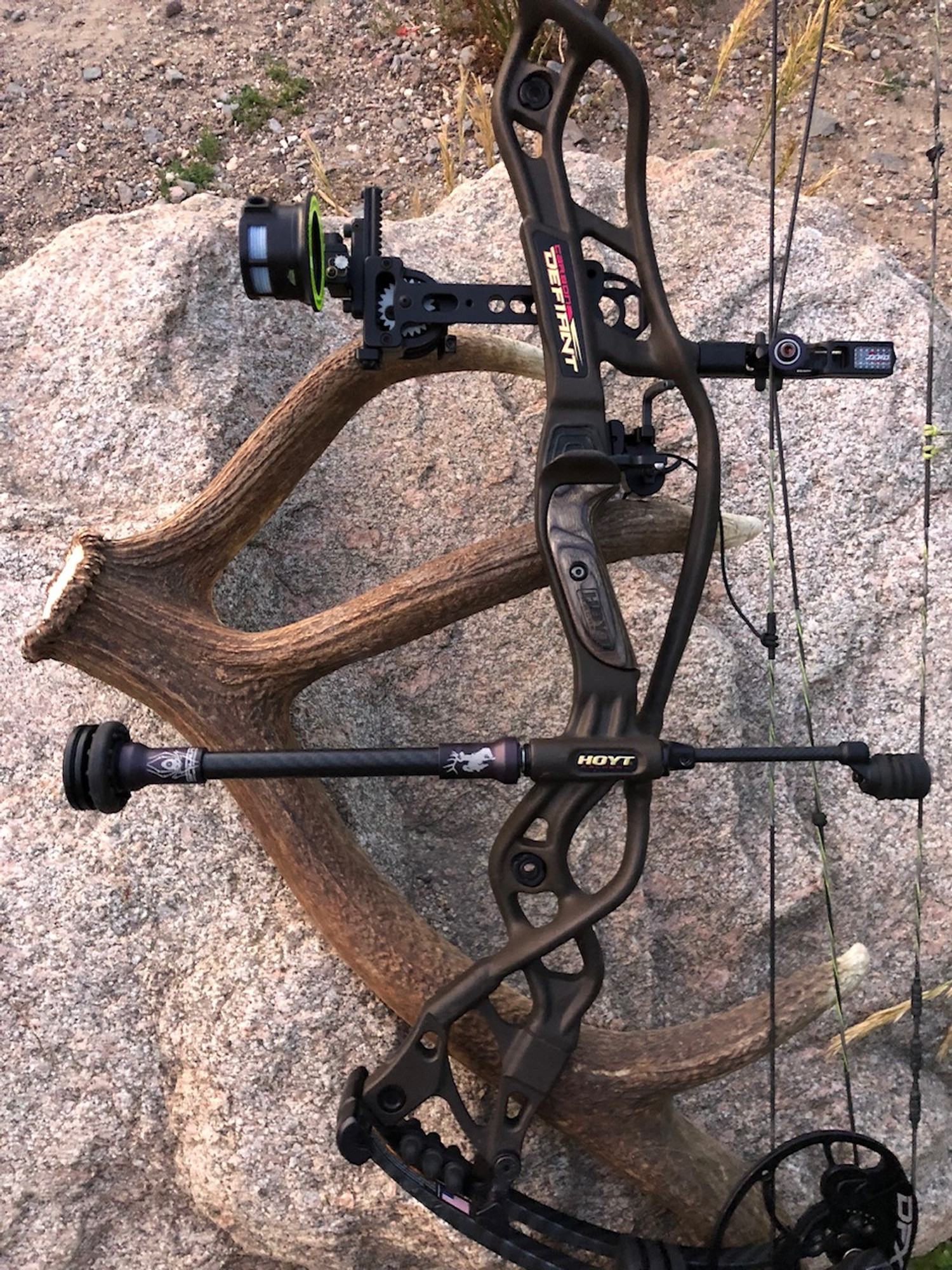Choosing the very best Archery Stabilizer: Tips and Recommendations
Wiki Article
The Ultimate Guide to Selecting the Right Archery Stabilizer for Improved Accuracy
Among the various accessories offered, an archery stabilizer plays a substantial function in boosting precision. In this comprehensive guide, we will certainly discover the crucial elements to take into consideration when picking an archery stabilizer for enhanced accuracy. Whether you are an experienced archer looking to upgrade your tools or a novice looking for advice, join us on this trip as we unwind the keys to picking the perfect archery stabilizer.Length: Finding the Ideal Stabilizer Length
Establishing the ideal stabilizer length is crucial when picking an archery stabilizer for optimal efficiency. The size of a stabilizer directly influences the equilibrium, security, and precision of the bow. A stabilizer that is also long can make the bow feel tough and top-heavy to manage, while a stabilizer that is as well brief may not provide enough security and dampening of resonances. Discovering the best size needs considering factors such as the archer's shooting style, bow weight, and individual preference.A longer stabilizer, generally varying from 8 to 12 inches, can give greater stability and decrease bow torque. This is specifically useful for archers who shoot with a high draw weight or those that have a propensity to torque the bow throughout the shot. The included size helps to disperse the weight uniformly and counterbalance any kind of torque or movement.
On the other hand, a much shorter stabilizer, usually between 4 to 7 inches, uses a lot more ability to move and quicker reaction. It is favored by archers who fire with a lower draw weight or those that require more wheelchair, such as hunters or 3D shooters. The shorter size enables much easier motion with tight rooms and faster adjustments.
Inevitably, the optimum stabilizer length refers personal preference and shooting design. It is recommended to try out various sizes and observe the impacts on security and accuracy. Consulting with seasoned archers or specialists can likewise provide beneficial insights and referrals.
Weight: Establishing the Appropriate Stabilizer Weight
After taking into consideration the optimum stabilizer length, the following essential factor to consider when picking an archery stabilizer is figuring out the ideal stabilizer weight - archery stabilizer. The weight of the stabilizer plays a critical role in enhancing precision and security during the shotThe weight of the stabilizer impacts the balance and control of the bow. A heavier stabilizer can provide raised security and control, especially for shooters with a propensity for shaky hands or inconsistent shots. It assists to soak up the vibrations and recoil created by the bow, decreasing torque and decreasing the result on the arrowhead's flight.
On the various other hand, a lighter stabilizer enables for a quicker and a lot more responsive bow. It can be useful for shooters that focus on ability to move and rate over security. Lighter stabilizers likewise lower fatigue during lengthy shooting sessions or competitions.
To establish the suitable stabilizer weight for your requirements, it is very important to consider your capturing design, physical strength, and bow setup. Explore various weights and observing the effect on your capturing performance is crucial to discovering the perfect balance.
Inevitably, the ideal stabilizer weight will certainly differ for every specific archer. It is advised to begin with a moderate weight and make changes based on individual preference and capturing results. Bear in mind, the goal is to achieve a regulated and secure shot, while likewise preserving convenience and convenience of use.
Materials: Picking the Right Materials for Durability and Efficiency
When selecting an archery stabilizer, it is vital to very carefully take into consideration the products made use of in its building and construction to guarantee sturdiness and optimize performance. The option of products can significantly affect the general top quality and efficiency of the stabilizer.One of the most commonly utilized materials for stabilizers is carbon fiber. Carbon fiber provides a high strength-to-weight proportion, making it lightweight yet extremely solid. This product takes in vibrations and decreases bow torque, resulting in improved security and accuracy. In addition, carbon fiber stabilizers are resistant to temperature level adjustments and are less likely to warp or bend with time.
An additional preferred product for stabilizers is aluminum. Aluminum stabilizers are known for their resilience and rigidness. They offer excellent wetting capacities, lowering the quantity of shock and vibration moved to the shooter's hand. Light weight aluminum stabilizers likewise provide a large range of modification options, permitting archers to adjust the weight and length to suit their choices.
Some stabilizers are built utilizing a mix of products. For instance, a stabilizer may have a carbon fiber core wrapped in a light weight aluminum covering. This crossbreed style incorporates the finest high qualities of both products, supplying optimum security, resilience, and efficiency.
Design: Understanding the Various Stabilizer Designs and Their Results
Taking into consideration the materials utilized in archery stabilizers, it is important to now dive into the various styles of stabilizers and their particular impacts. The layout of an archery stabilizer plays an essential duty in improving precision and reducing resonance during the shot. There are several various layouts available in the market, each with its own distinct attributes.
An additional popular layout is the side bar stabilizer. This style involves attaching a short pole to the side of the bow, alongside the major lengthy pole. Side bar stabilizers assist in counteracting the weight of accessories, such as quivers or views, and give added stability to the bow.
Some stabilizers come with adjustable weights. These stabilizers allow archers to adjust the balance and feel of their bows by adding or removing weights. This feature is specifically helpful for archers that like a specific weight distribution or want to experiment with different configurations.
Additionally, some stabilizers integrate dampening technology to lessen vibration and sound. These stabilizers frequently have built-in dampeners or use materials that take Web Site in resonances, resulting in a smoother and quieter shot.

Accessories: Exploring Extra Devices for Boosted Security
These devices are designed to function in conjunction have a peek at this website with the archery stabilizer to provide an even higher degree of security and precision. One such device is the V-bar or the side stabilizer place.One more device that can enhance stability is a bow sling. A bow sling is a strap that affixes to the bow and enables the archer to keep a kicked back hold on the bow manage without the anxiety of dropping it (archery stabilizer). This loosened up grip helps to reduce muscle mass stress and permits for a more stable and constant shot
Additionally, a stabilizer weight system can be made use of to make improvements the balance and security of the bow. These weight systems generally include small weights that can be added or removed from the stabilizer to change the balance factor of the bow. By discovering the ideal balance point, archers can accomplish a more exact and secure shot.
Conclusion
In conclusion, picking the right archery stabilizer includes taking into consideration variables such as length, weight, products, layout, and added accessories. The optimum stabilizer length and weight will depend on specific preferences and shooting design.Figuring out the optimal stabilizer length is important when picking an archery stabilizer for ideal useful content performance. A stabilizer that is too long can make the bow really feel tough and top-heavy to control, while a stabilizer that is as well brief might not provide enough security and dampening of vibrations - archery stabilizer.Taking right into account the materials utilized in archery stabilizers, it is important to currently dive into the different designs of stabilizers and their corresponding results. Side bar stabilizers assist in counterbalancing the weight of devices, such as views or quivers, and give added security to the bow
These weight systems normally are composed of tiny weights that can be added or eliminated from the stabilizer to change the equilibrium point of the bow.
Report this wiki page